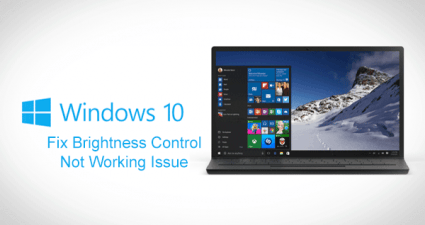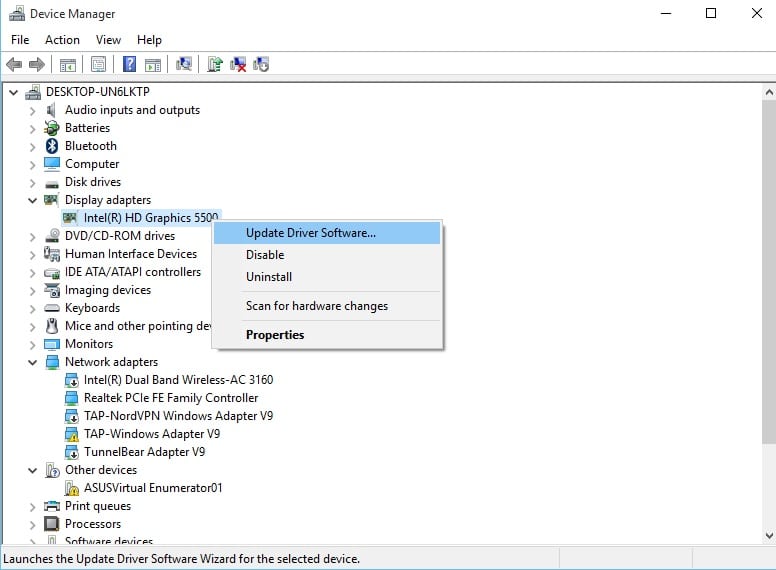

- Brightness control not working mac install#
- Brightness control not working mac drivers#
- Brightness control not working mac update#
- Brightness control not working mac windows 10#
- Brightness control not working mac Pc#
Then, Windows will install the driver successfully.
Brightness control not working mac drivers#
Click Browse my computer for drivers > Let me pick from a list of available drivers on my computer, choose Generic PnP Monitor, and click Next.
Brightness control not working mac update#
Right-click this monitor and choose Update driver. In addition to disabling and enabling the Generic PnP monitor driver, you can choose to update the driver to fix your Windows 11 brightness issue. Step 3: Click Action at the top menu and choose Scan for hardware changes. Step 2: Expand Monitors, right-click on the Generic PnP Monitor and check if it is enabled. Step 1: Right-click the Start button and choose Device Manager.
Brightness control not working mac windows 10#
Related article: Fix Generic PnP Monitor Issue in Windows 10 So, you can also have a try by following the steps below. According to users, this way is useful to fix the issue of brightness not working like Windows 11 brightness control not working, Windows 11 brightness slider missing, etc. PnP stands for the plug-and-play hardware device. Solutions to Windows 11 Brightness Not Working Disable/Enable Generic PnP Monitor or Update Driver If you run into one of the above situations, how can you fix the Windows 11 brightness issue? Move to the next part to look for some solutions. In addition, sometimes Windows 11 brightness keeps going down. According to users, the brightness option is existing, but the brightness control is not working. When going to adjust screen brightness from Quick Access, the option is greyed out.īesides, there are some other situations on Windows 11 brightness not working.

However, you may fail to change brightness in Windows 11 since there is no brightness slider in Settings.
Brightness control not working mac Pc#
If you use the PC outdoor or near a window, you also need to adjust the brightness according to the brightness of your surroundings. When using a computer, sometimes you need to change the screen brightness to avoid eye strain, improve visibility, and save energy.

If you find brightness is not working, this is frustrating. Press and hold (or right-click) the display adapter name, then select Update driver and follow the instructions.Windows 11 brightness issue is a common problem. In Device Manager, select Display adapters, then select the display adapter. In the search box on the taskbar, type Device Manager, and then select Device Manager from the list of results. If you don't have a desktop PC and the slider doesn't appear or work, try updating the display driver. To find the brightness slider in earlier versions of Windows 10, select Settings > System > Display, and then move the Change brightness slider to adjust the brightness. The Brightness slider appears in action center in Windows 10, version 1903. To change the brightness on an external monitor, use the buttons on it. You might not see the Change brightness for the built-in display slider on desktop PCs that have an external monitor. Even if you use it, you can still move the Change brightness for the built-in display slider to fine-tune the brightness level. This automatic setting helps make sure your screen is readable wherever you go. Under Brightness and color, look for the Change brightness automatically when lighting changes check box, and then select it to use this feature. To find out if your PC supports this, select Settings > System > Display. Some PCs can let Windows automatically adjust screen brightness based on the current lighting conditions. (If the slider isn't there, see the Notes section below.) Select action center on the right side of the taskbar, and then move the Brightness slider to adjust the brightness. For more info, see Adaptive brightness and contrast in Windows. Some Windows PCs can automatically adjust the screen brightness and contrast based on content that’s displayed on your built-in screen. You might also see another check box displayed: Help improve battery by optimizing the content shown and brightness. Even if you use it, you can still move the Brightness slider to fine-tune the brightness level for a built-in display. Select Brightness, look for the Change brightness automatically when lighting changes check box, and then select it to use this feature. To find out if your PC supports this, select Settings > System > Display.

(If the slider isn't there, see the Notes section below.) Select the Network icon on the right side of the taskbar, and then move the Brightness slider to adjust the brightness.


 0 kommentar(er)
0 kommentar(er)
